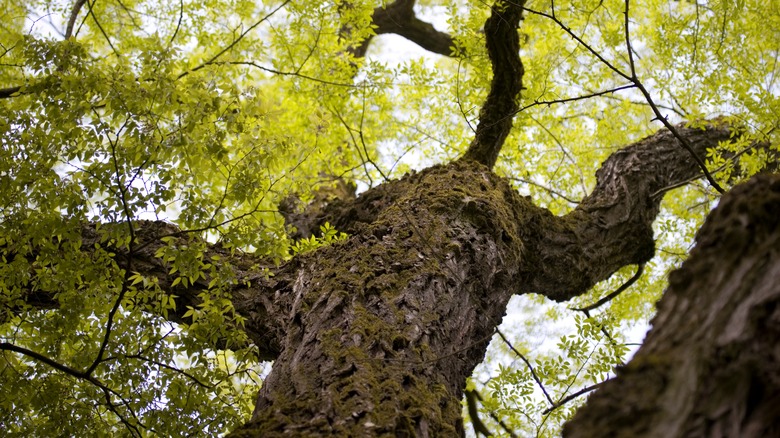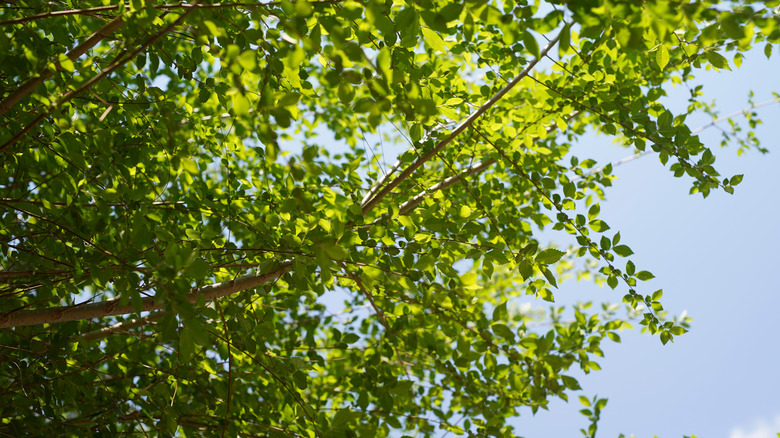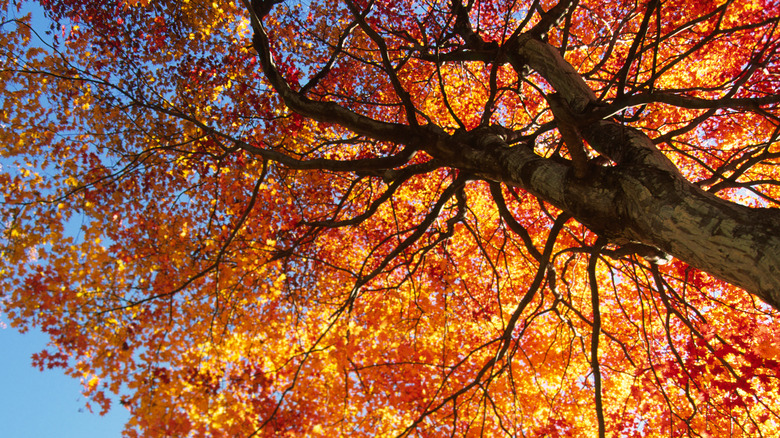The Invasive Species Of Elm Tree You'll Want To Avoid Growing In Your Yard
Elm trees grow big and beautiful, with tree branches that start tall on the trunk and spread outward like an umbrella, making them a popular breed throughout the U.S. This creates a regal look, adding gravitas to your front yard and boosting your curb appeal. They're also wonderful shade trees and can provide a makeshift roof for everything from a patio table and chairs to a weekly backyard picnic. But before you run to the nursery to pick up an elm, familiarize yourself with the different varieties. Specifically, there is one invasive variety you will want to avoid — the Siberian elm.
These trees can proliferate in the area very quickly, choking out any surrounding native vegetation. Once they're introduced to the area, they can begin to spread. As you can imagine, that can be particularly tricky if you live somewhere residential, like a suburb. While you might want to cultivate a new elm tree in your backyard, that doesn't mean your neighbor (or the neighbor four doors down) does. Because of this, it's best to avoid the Siberian elm. Here is a closer look at its invasive nature and which tree you can plant instead for a similar look.
Siberian elms are an invasive species
You might be tempted to plant a Siberian elm over other varieties for many reasons. First, it's a little smaller than the typical American elm, making it more manageable. A Siberian elm grows up to 66 feet tall, whereas an American elm can grow up to 98 feet. This makes it safer to plant near houses and easier to care for, especially when pruning. Siberian elms are also less likely to catch Dutch Elm disease. Despite these benefits, its invasive nature is enough to put them on your "do not plant" list.
A Siberian elm left unchecked can take over an area in just a handful of years. That's because they're highly adaptable to conditions other trees can't handle, like salty soil. Furthermore, the seeds sprout easily and grow quickly once established into saplings. Because it proliferates so quickly — and the wind blows its seeds far and wide — a Siberian elm tends to overtake surrounding plant life, stealing their resources and choking out their sunshine. As plants begin to die back, the Siberian elm can take over the resources.
Plant red maple instead for a similar vibe
If you're looking for a non-invasive tree similar to the Siberian elm, try the red maple. All sorts of stunning maple trees will add drama to your yard, but this one is the most similar to the Siberian elm. Both grow to medium heights, with the red maple reaching 50 feet and the Siberian elm reaching 66 feet. It also has a similarly fast growth rate, so you won't have to wait years before you can enjoy its shade or impressive curb appeal. It's equally low maintenance and won't need much pruning over the years. They also have similar canopy shapes, but the maple is more oval, and the elm is slightly rounder. Still, the effect is the same in your landscaping.
Like the Siberian elm, the red maple is winter hardy, so you won't need to worry about it suffering under frost or in snow storms. Also, like the Siberian, the red maple isn't picky about what kind of soil it's grown in. Although, red maples do get finicky if the dirt turns overly alkaline. As you can see, it's a similarly low-maintenance tree that can provide the same shade and wow factor as the Siberian, making it the perfect replacement.


